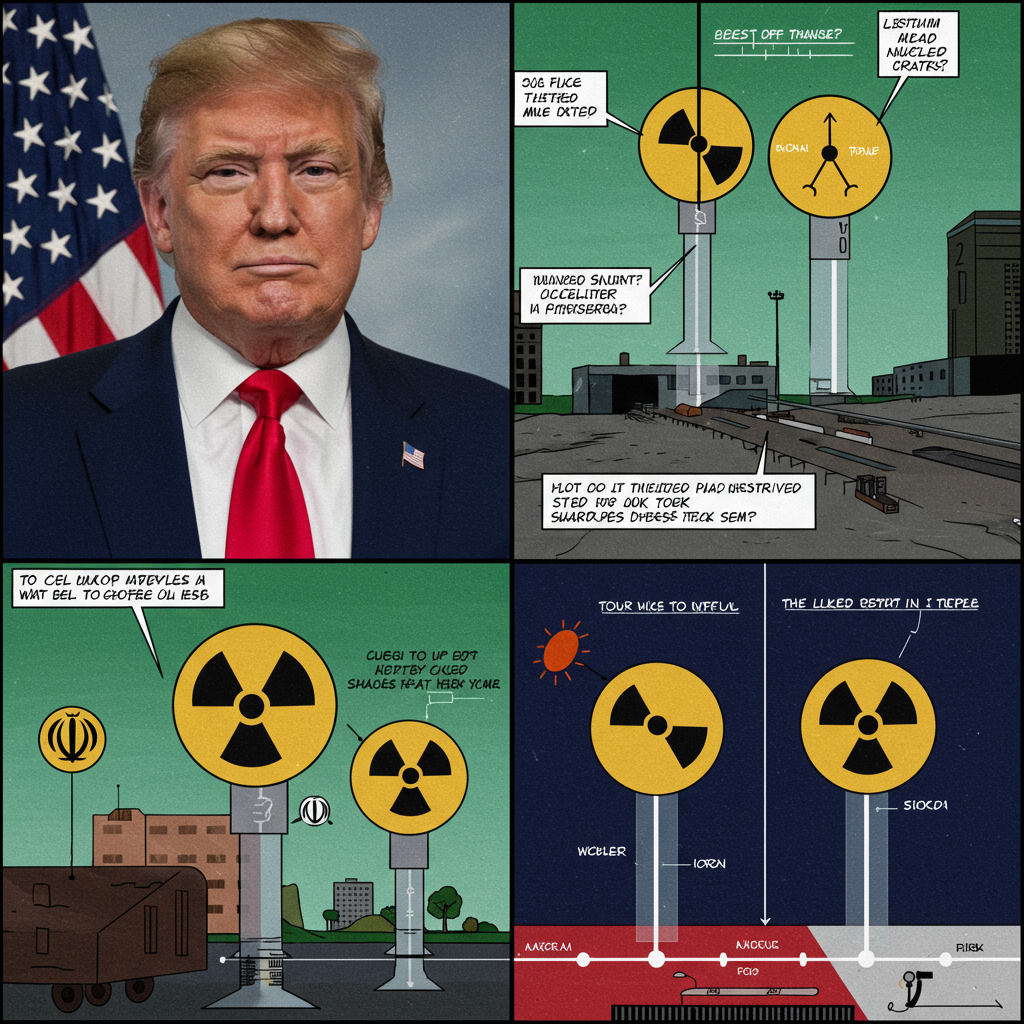Intelligence Rift: Is Iran Weeks Away From a Nuke?
A sharp disagreement has emerged between the U.S. intelligence community and statements made by former President Donald Trump regarding the immediate threat posed by Iran’s nuclear program. While intelligence officials maintain that Iran possesses significant enriched uranium but has not decided to build a weapon, Trump recently asserted the country was just “a few weeks” from acquiring one.
This public split in assessment comes amid heightened tensions and recent Israeli airstrikes targeting Iranian nuclear facilities.
US Intelligence: Stockpile High, Decision Pending
According to senior Democrats on the Senate Intelligence Committee and sources familiar with the matter, the U.S. intelligence community’s assessment of Iran’s nuclear program has remained consistent since March 2025. At that time, the Director of National Intelligence testified to lawmakers that Iran held large quantities of enriched uranium but had not yet made a political decision to “sprint” towards building an atomic bomb.
Senator Mark Warner, Vice Chair of the Intelligence Committee, confirmed receiving recent intelligence briefings that uphold this view. He expressed confusion over Trump’s contradictory public statements, emphasizing that the intelligence lawmakers receive paints a different picture. Warner stressed the need for the administration to clarify any potential changes in the intelligence assessment, insisting that such shifts must be based on factual evidence, not political pressure.
Despite possessing unprecedented levels of enriched uranium for a state without nuclear weapons, U.S. intelligence agencies continue to assess that Iran is not currently engaged in the key weaponization work required to build a bomb. The ultimate decision to pursue nuclear weapons, according to intelligence assessments, rests with Supreme Leader Ali Khamenei, who has maintained that Iran’s nuclear program is peaceful and civilian.
Conflicting Claims from Trump and Netanyahu
In contrast to the intelligence community’s position, President Trump stated that Iran was only “a few weeks” away from having a nuclear weapon. This alarming timeline was echoed by Israeli Prime Minister Benjamin Netanyahu, who claimed Iran was pursuing a “secret plan” to weaponize uranium and could achieve a test device and possibly an initial weapon within “months and certainly less than a year.”
Netanyahu asserted that Israeli intelligence shared with the U.S. was “absolutely clear” on Iran’s rapid progress towards weaponization. While U.S. intelligence often incorporates information from Israeli services, it remains unclear whether these starkly different timelines result from differing interpretations of the same intelligence or separate sources.
The Technical Reality: Material vs. Weapon
Experts and international bodies like the International Atomic Energy Agency (IAEA) offer a more nuanced perspective, highlighting the critical distinction between possessing fissile material and assembling a functional nuclear weapon.
Enriched Uranium: To build a nuclear weapon, Iran would need to enrich uranium to approximately 90% purity. While Iran currently has a significant stockpile—around 400 kilograms of uranium enriched to 60%, according to the IAEA—reaching 90% purity is considered a relatively small technical step from this level. The IAEA Director General, Rafael Grossi, has confirmed that Iran is the only non-nuclear-weapon state accumulating 60% enriched uranium, calling it a “matter of serious concern.” U.S. officials estimate Iran has enough material at this purity to produce the fissile core for up to 10 weapons within weeks, if they chose to do so rapidly.
Weaponization: However, acquiring weapons-grade fissile material is only the first stage. Iran would still need to build, test, and integrate a nuclear device with a delivery system like a missile. Western officials and analysts estimate this complex process could take anywhere from several months to well over a year, depending on the level of covert development.
Weapons experts clarify that while Iran may be weeks away from securing enough fissile material, they are not weeks away from possessing a deployable nuclear weapon. IAEA Director General Grossi also stated that despite concerns over enrichment levels and non-compliance, U.N. inspectors currently do not have proof of a “systematic effort to move into a nuclear weapon” program by Iran at this time, although some related activities may have continued until 2009 after a structured weaponization effort ceased in the early 2000s.
Geopolitical Friction and Setbacks
The debate over Iran’s nuclear timeline is playing out against a backdrop of escalating conflict. Recent Israeli airstrikes have targeted Iranian nuclear facilities, including centrifuge plants at Natanz and labs involved in uranium metal conversion. These actions are estimated by sources familiar with the situation to have potentially set back Iran’s nuclear program by a few months, although the full impact and ability for Iran to rebuild quickly remain uncertain.
The conflicting assessments from political leaders and intelligence bodies underscore the complexity and sensitivity surrounding Iran’s nuclear capabilities and raise concerns about potential politicization of intelligence, drawing comparisons to historical instances where intelligence assessments were contested in the lead-up to military action. The core disagreement centers not just on Iran’s technical capability, but on its current political intent and the actual time needed to bridge the gap between potential fissile material and a deliverable nuclear weapon.




